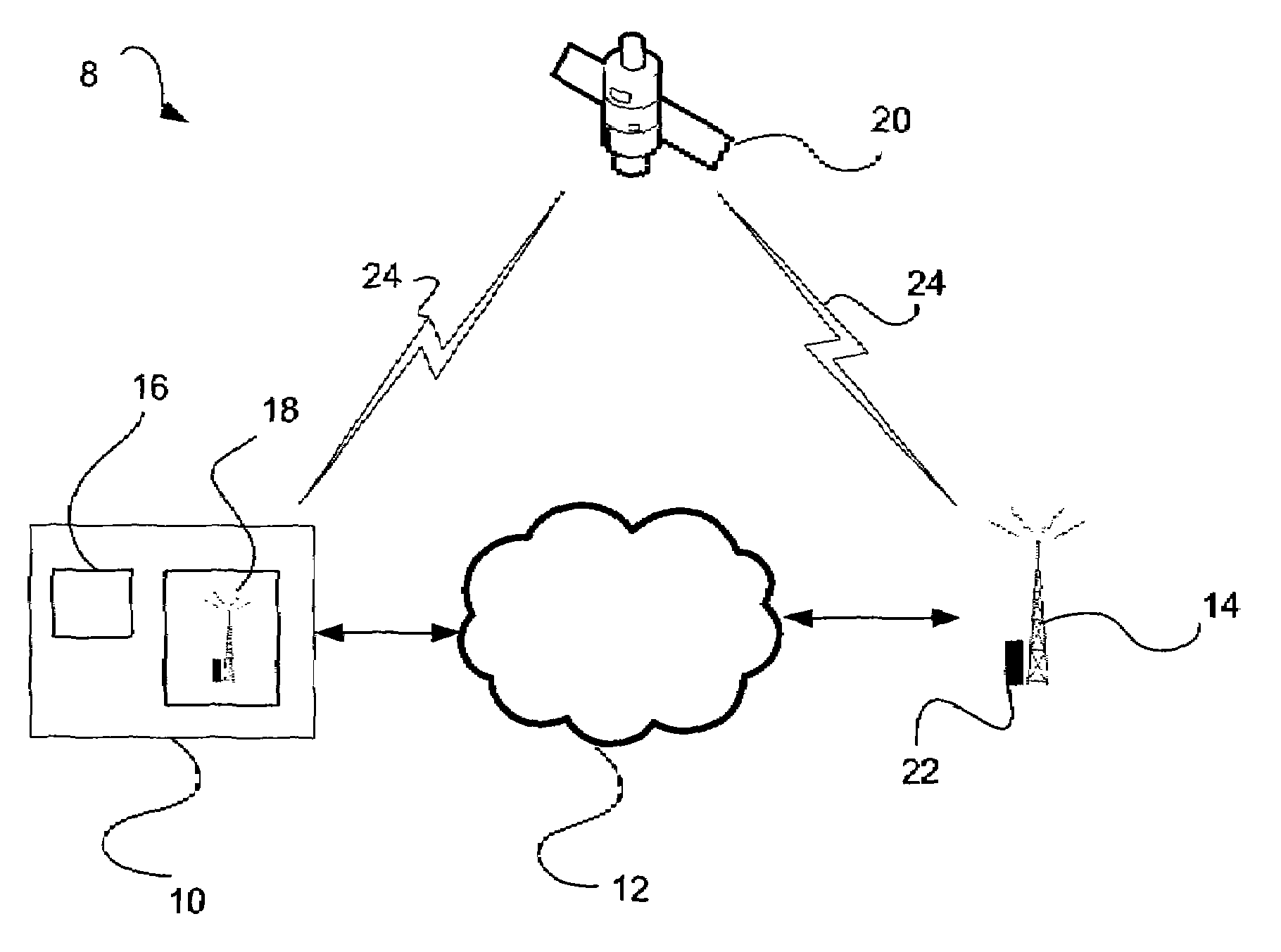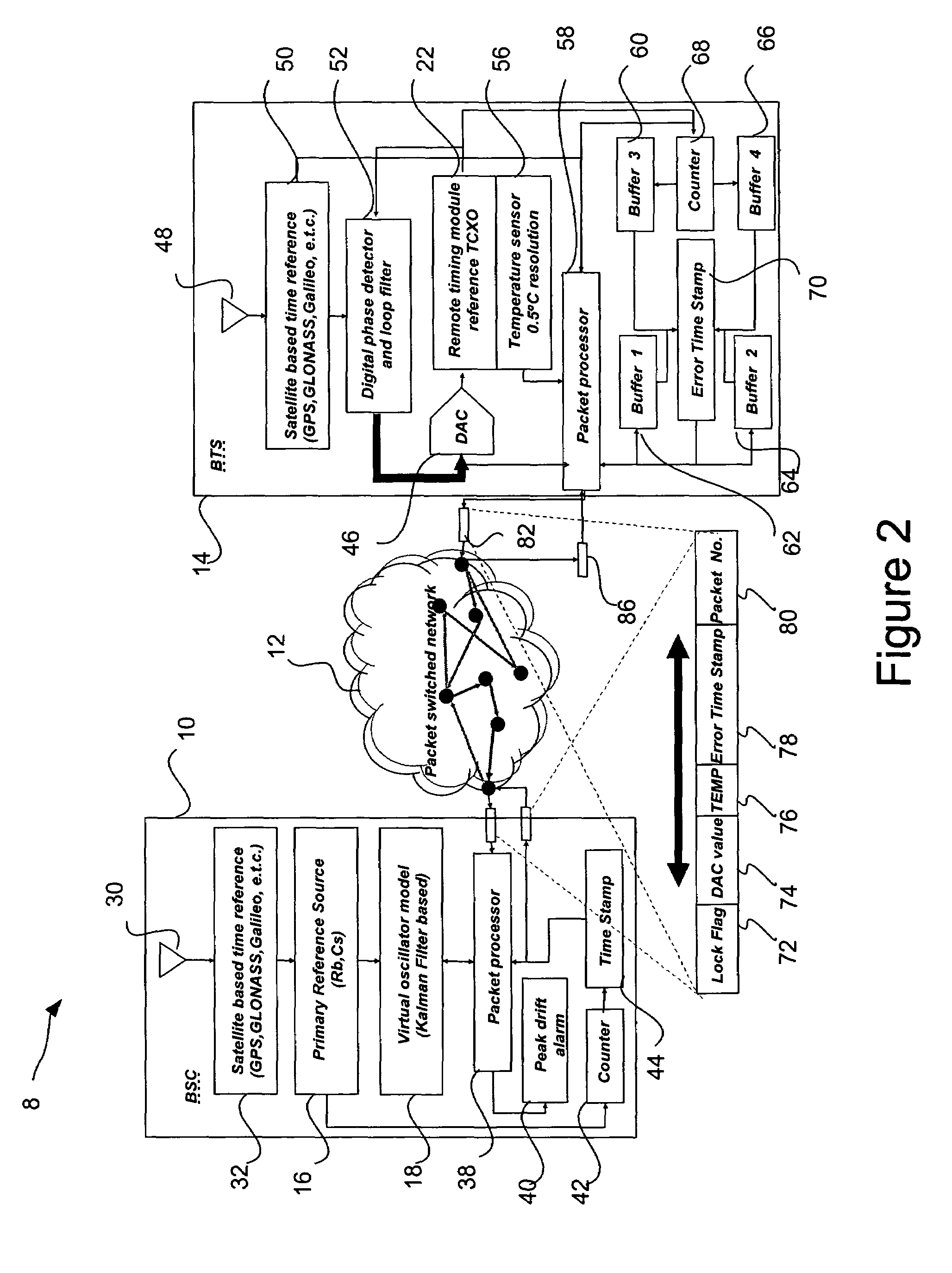Enhanced holdover for synchronous networks employing packet switched network backhaul
a technology of packet switching and synchronous networks, applied in the field of synchronous wireless networks, can solve problems such as base station failure to communicate properly, lightning damage and other physical damage, and base station contact loss,
- Summary
- Abstract
- Description
- Claims
- Application Information
AI Technical Summary
Benefits of technology
Problems solved by technology
Method used
Image
Examples
Embodiment Construction
[0017]It should be understood at the outset that although an exemplary implementation of one embodiment of the present disclosure is illustrated below, the present system may be implemented using any number of techniques, whether currently known or in existence. The present disclosure should in no way be limited to the exemplary implementations, drawings, and techniques illustrated below, including the exemplary design and implementation illustrated and described herein, but may be modified within the scope of the appended claims along with their full scope of equivalents.
[0018]In an embodiment shown in FIG. 1, the enhanced holdover system 8 for synchronous networks includes a base station controller (BSC) 10 in communication with a base transceiver station (BTS) 14 via a packet switched network (PSN) 12 such as the internet. While a simplified network is shown in FIG. 1, it is understood that synchronous networks may comprise a plurality of base station controllers, with each in tu...
PUM
 Login to View More
Login to View More Abstract
Description
Claims
Application Information
 Login to View More
Login to View More - R&D
- Intellectual Property
- Life Sciences
- Materials
- Tech Scout
- Unparalleled Data Quality
- Higher Quality Content
- 60% Fewer Hallucinations
Browse by: Latest US Patents, China's latest patents, Technical Efficacy Thesaurus, Application Domain, Technology Topic, Popular Technical Reports.
© 2025 PatSnap. All rights reserved.Legal|Privacy policy|Modern Slavery Act Transparency Statement|Sitemap|About US| Contact US: help@patsnap.com



